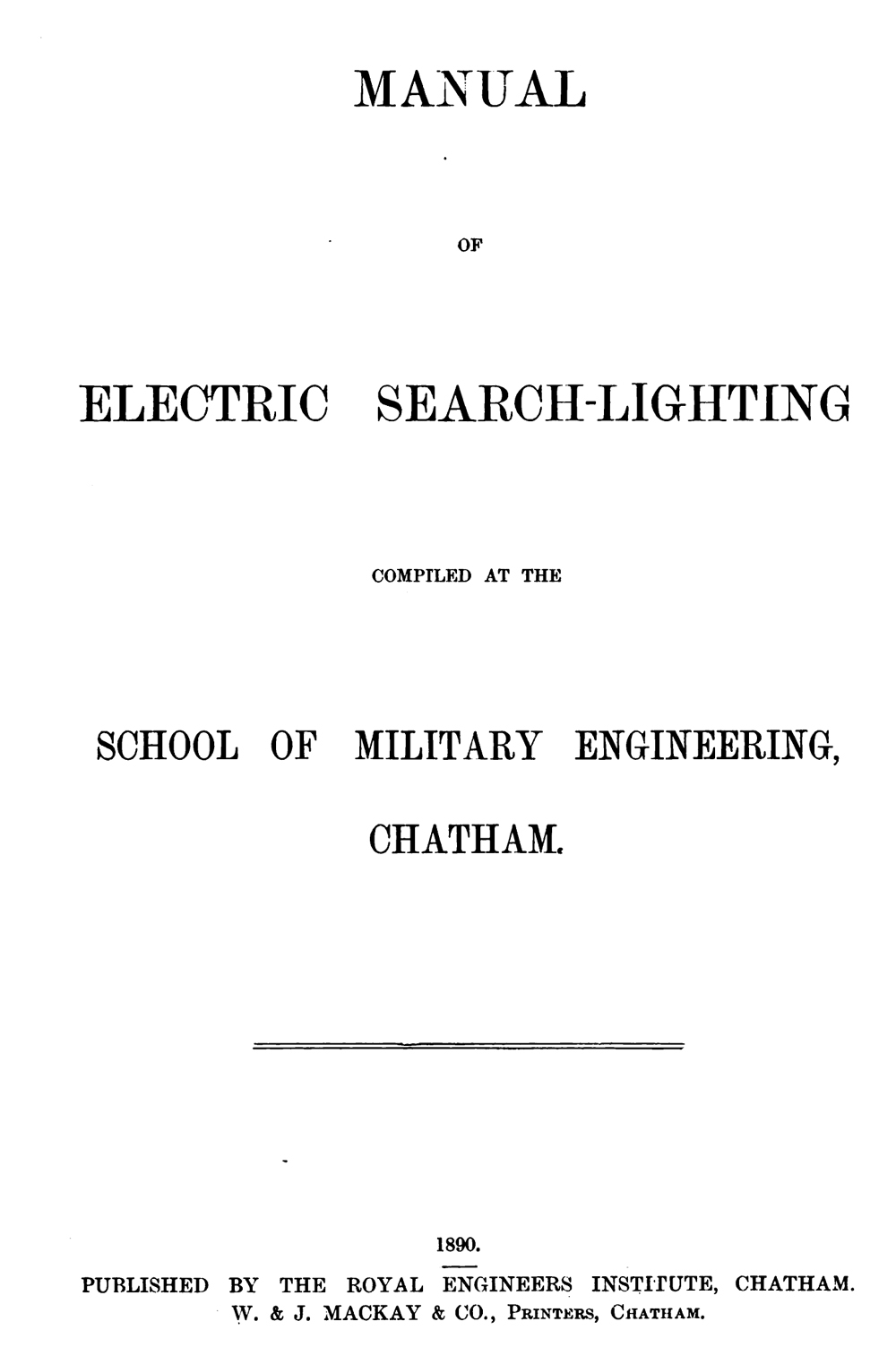Coastguard Battery – Defence Electric Lights
| < Ammunition | Δ Index | The End > |
Defence Lights – or search lights as they were later known were introduced in the late 1880s.
In 1890, the School of Military Engineering, Chatham published the “Manual of Electric Search-Lighting.”
This is primarily a technical book but there is a brief chapter on the “Tactical Use of the Electric Light”.
It suggested that the electric light can be used not only to locate the enemy but also to prevent the enemy seeing you by obscuring his vision.
The use of electric lights to locate an enemy is identified as:
• A moving light to sweep an area. Search or sweep light.
• A fixed beam across an area that the enemy must traverse. Fixed Beam.
Between 1890 and 1914 Defence Electric Lights were all under the control of the Royal Engineers.
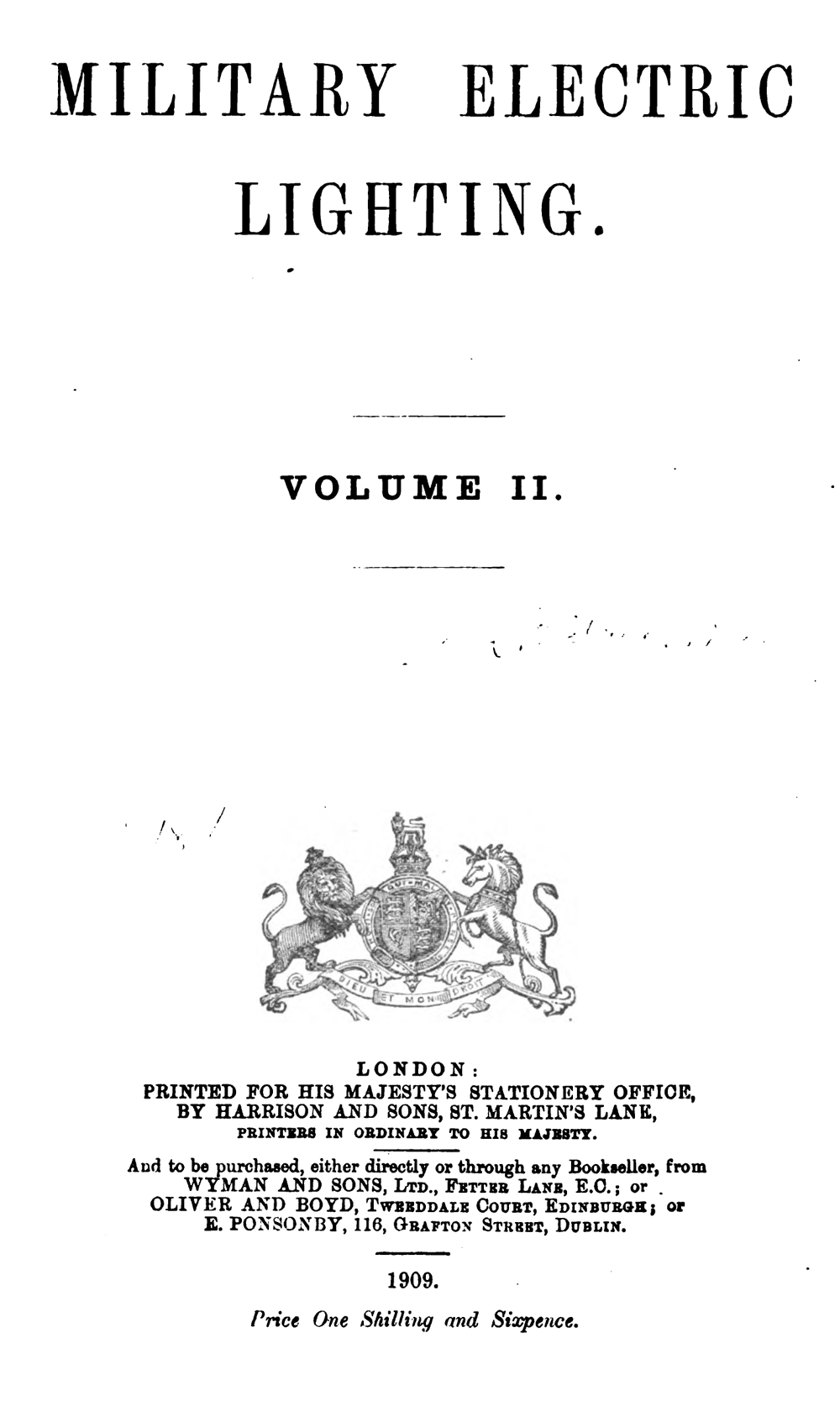 The technology advanced rapidly, and in 1909 the Military Electric Lighting Vol2 was published
The technology advanced rapidly, and in 1909 the Military Electric Lighting Vol2 was published
By the middle of the 1890s after some experimentation the British had settled on the 90cm light as the most appropriate for Coastal Defence Work. A common model was the Siemens Projector which had the following specifications:
Light Beam: Two Billion candles, Range: 3,650 Metres, Technology: 90 cm diameter carbon arc projector type.
The light was collimated into a narrow beam, using either a Fresnel lens – as used in lighthouses, or a parabolic reflector.
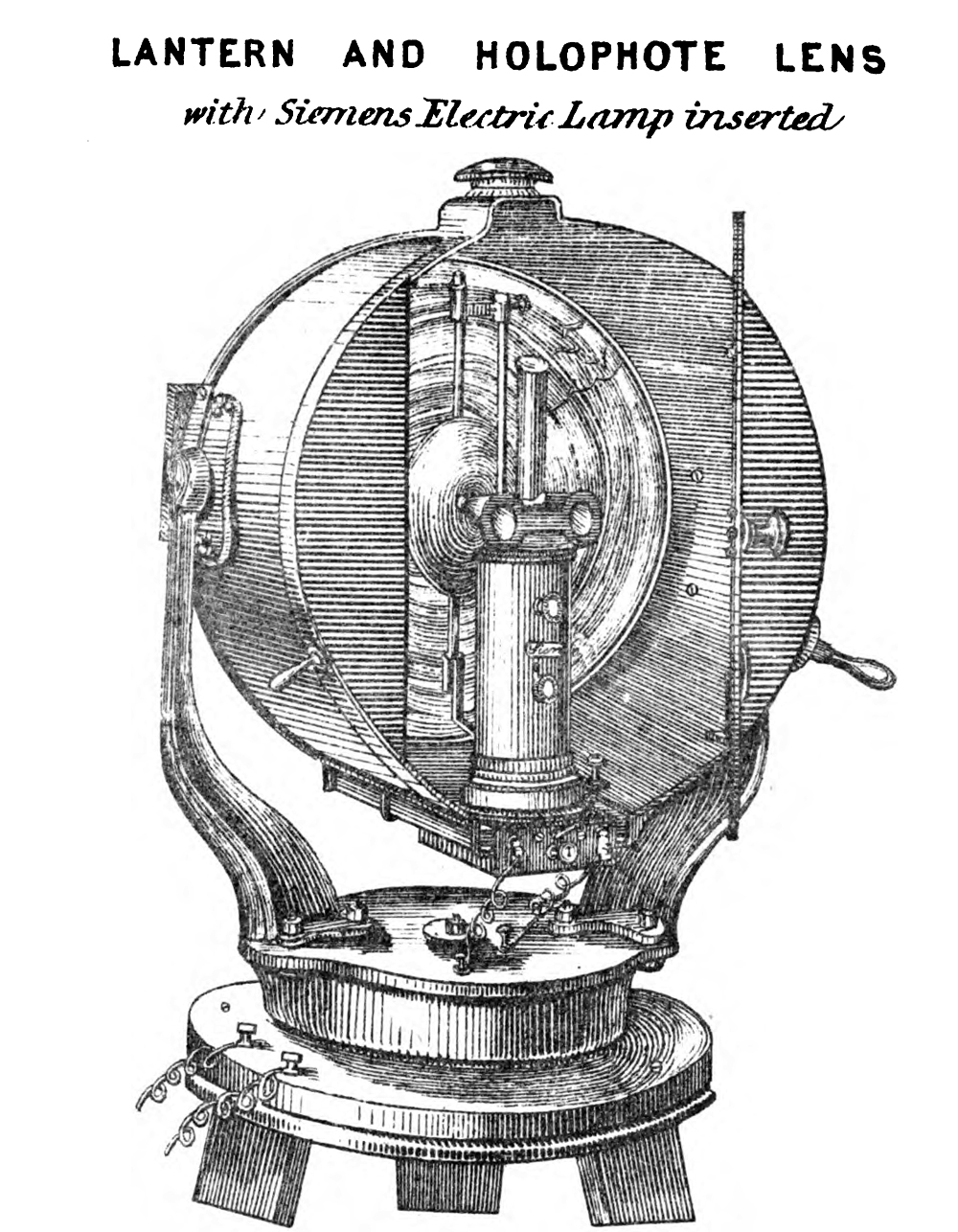 A Siemens arc-lamp in a Fresnel lens housing
A Siemens arc-lamp in a Fresnel lens housing
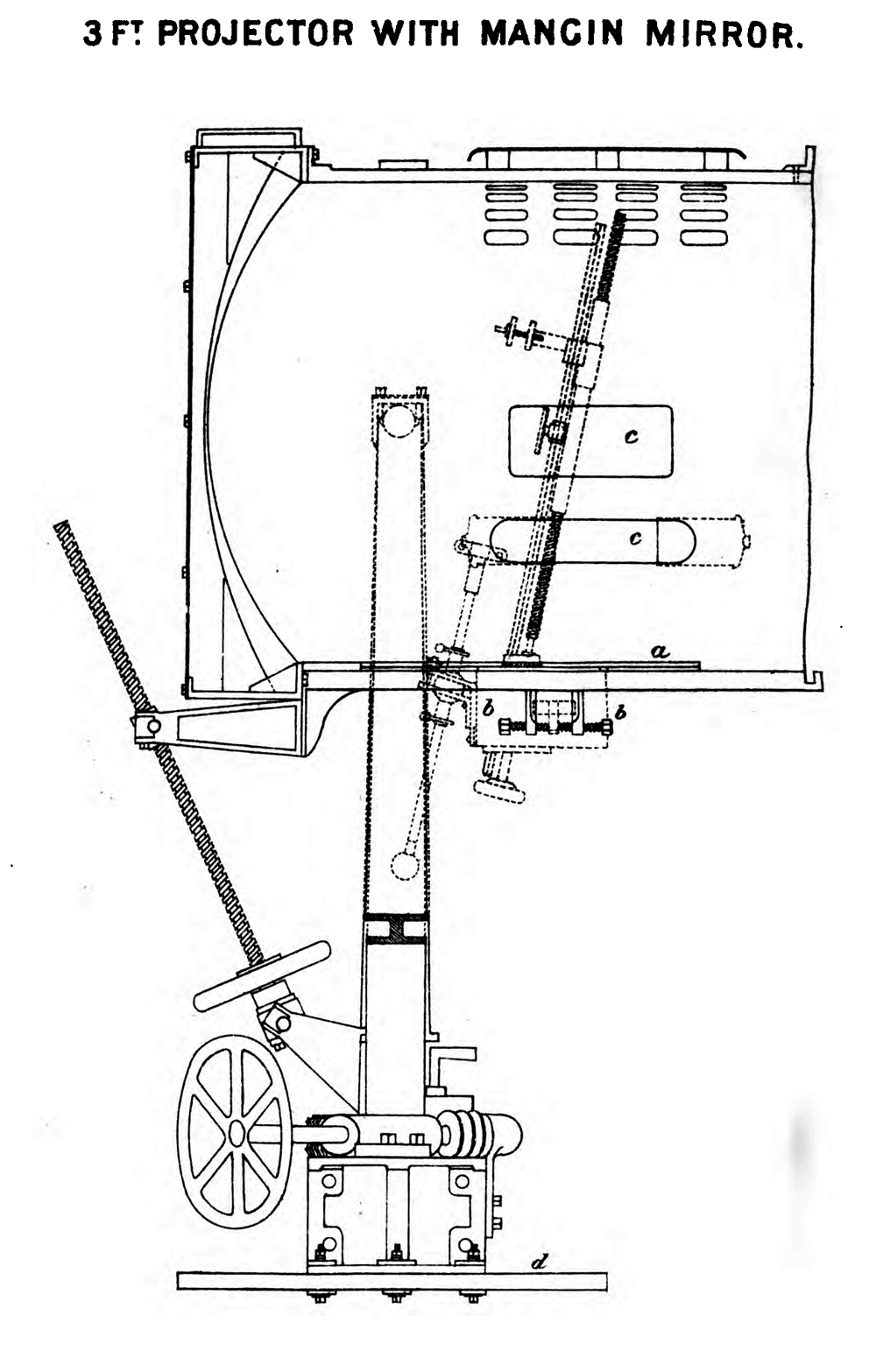 A Siemens arc-lamp in a reflective mirror Fresnel lens housing
A Siemens arc-lamp in a reflective mirror Fresnel lens housing
The light was of course vulnerable to enemy bullets or shells, so some sites used a see-saw projector, where the light projected “backwards” and then was reflected forwards from a plain mirror. The light mechanism was safely ensconced in a concrete housing, with only the easily-replaced plain mirror in the line of fire
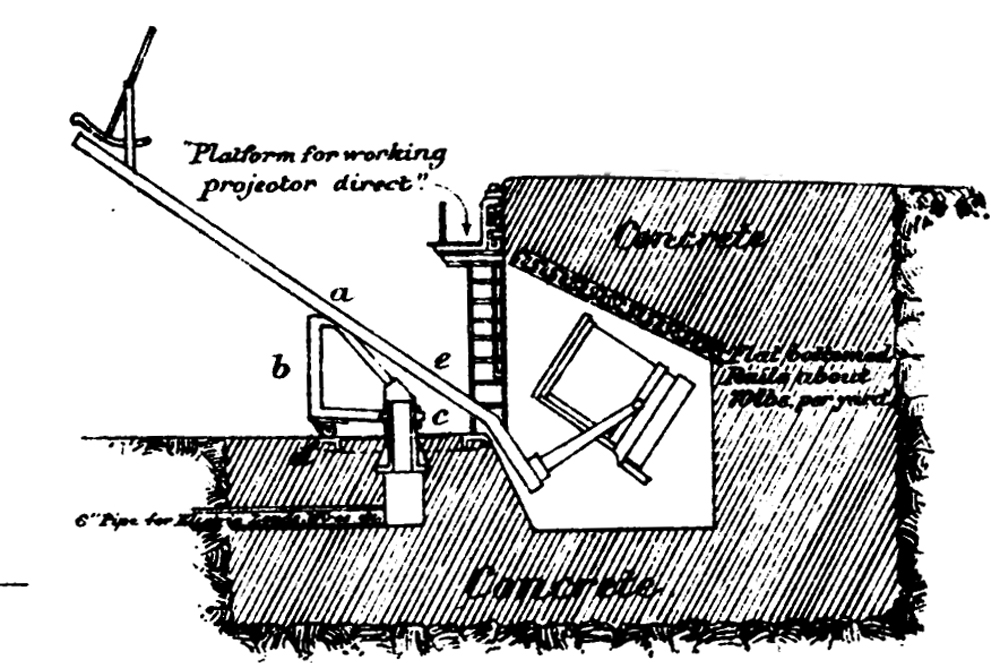 A see-saw mounting
A see-saw mounting
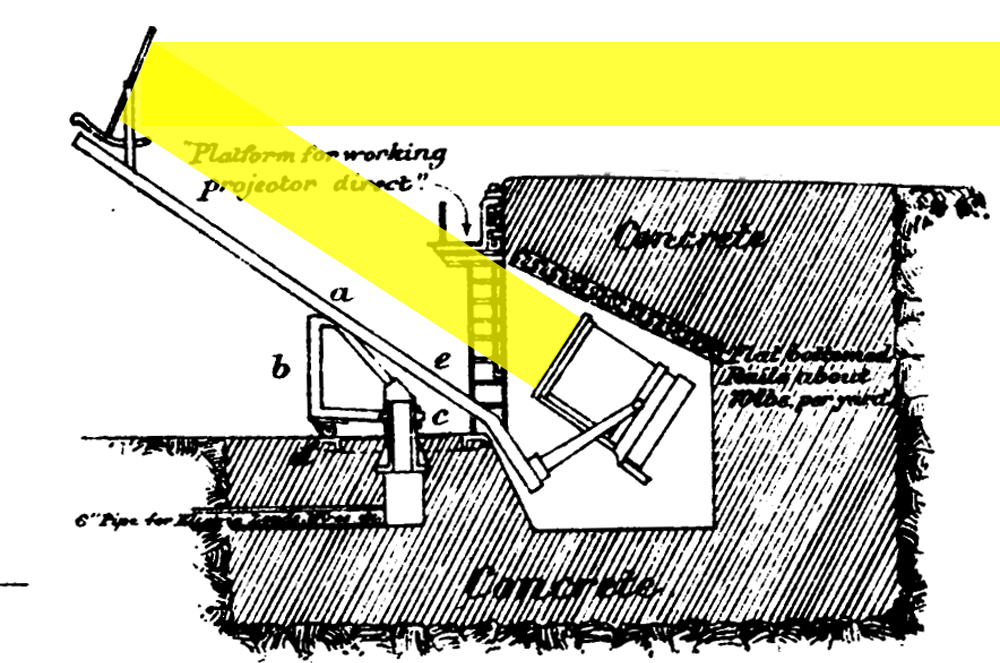 A see-saw mounting – showing the light-beam
A see-saw mounting – showing the light-beam
We don’t know what type of mounting was used in the Coastguard battery!
The arc-lamp
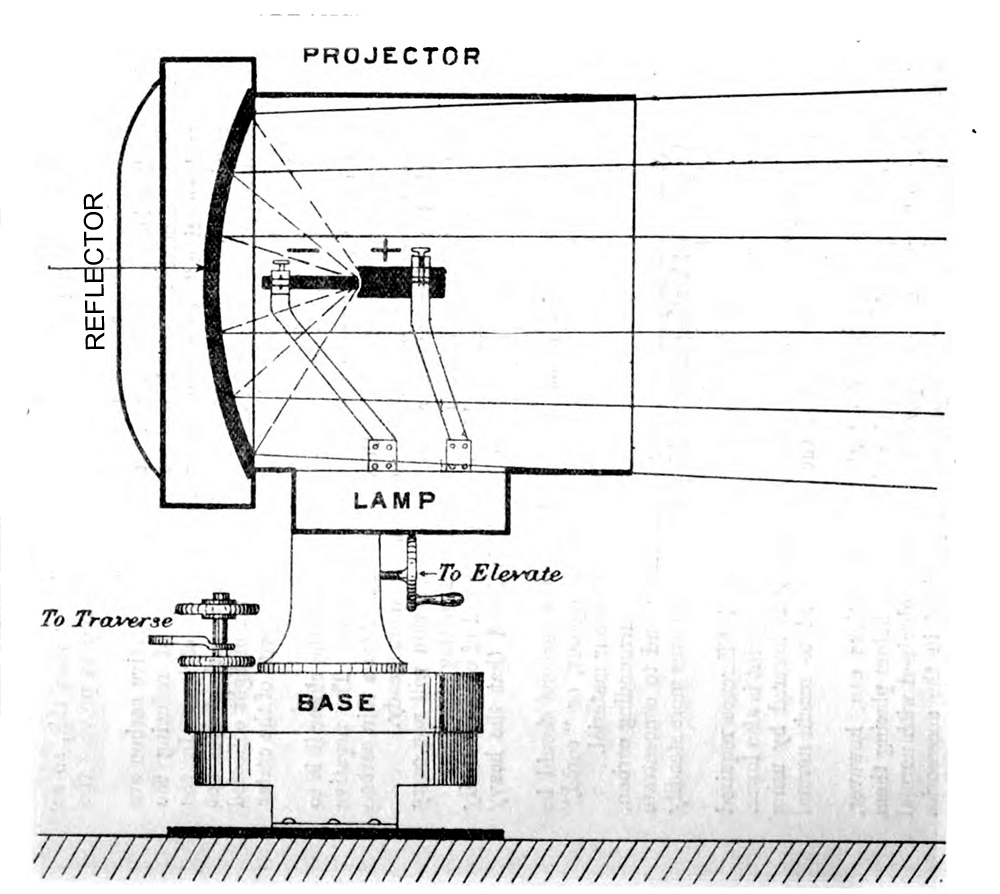
The arc-lamp consists of two carbon rods connected to a dc electricity supply. If the tips of two rods touch briefly, the current which flows creates a local hot spot, vaporizing the carbon. If the rods are then separated by a small gap, current flows through the vapour between the rods, emitting an intense light, and generating enough heat to maintain the creation of more vapour, sustaining the arc. A similar effect is used when arc-welding.
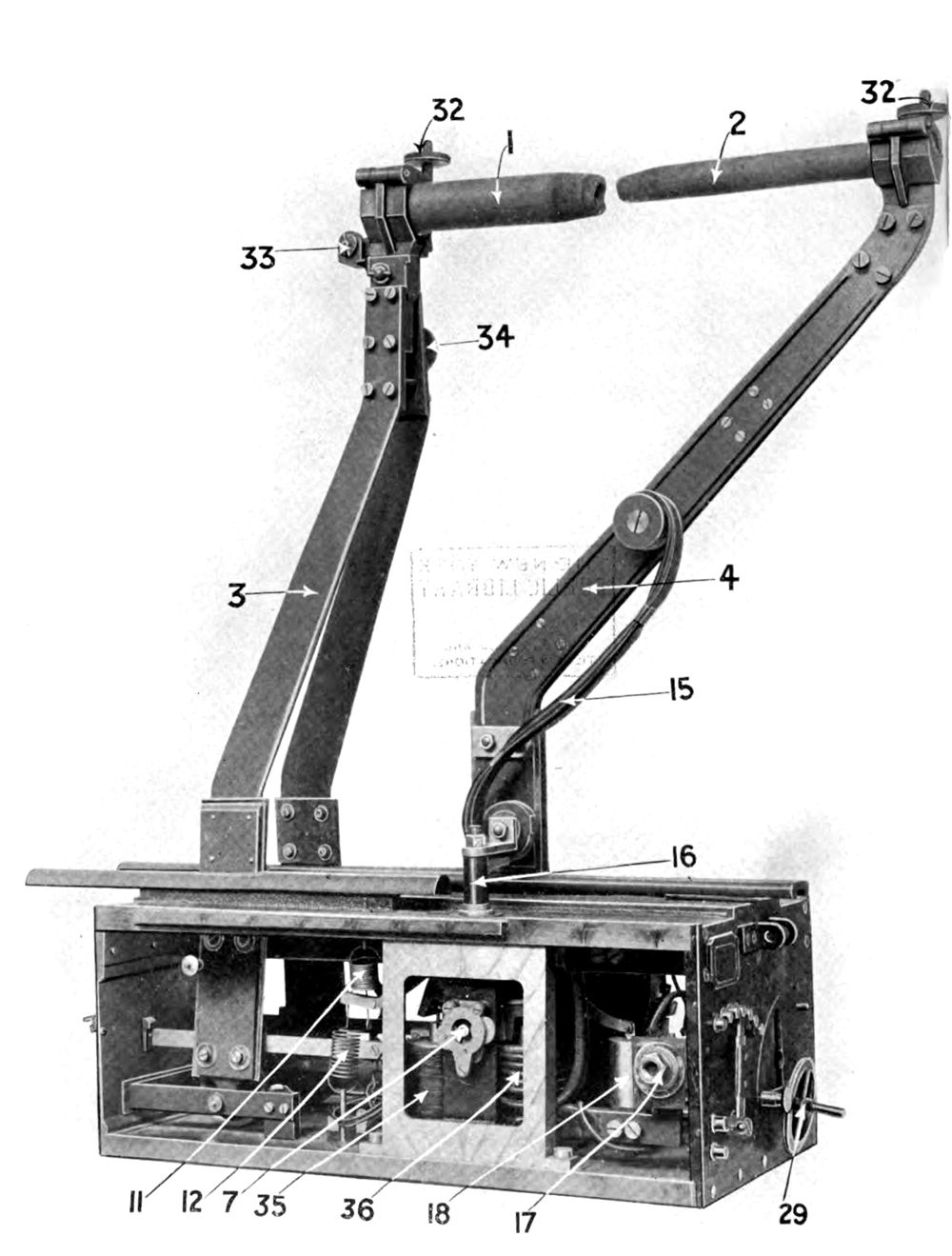
As the rods are steady consumed, an electro-mechanical mechanism maintains the correct gap between the rods to sustain the arc.
The engine and generator
Each arc-lamp requires a power supply of 60 volts dc at 120 amps = 7.2 kW. The electricity was generated by a motor-generator in the engine room behind the gun battery.
Initially steam power was used, but it took two to three hours to get up a head of steam, clearly too long if facing a surprise attack. By 1894 paraffin was adopted as an alternative and these generators only took two hours to become effective.
 The motor – single cylinder running on paraffin
The motor – single cylinder running on paraffin
 The generator
The generator
Inner Defences Lights
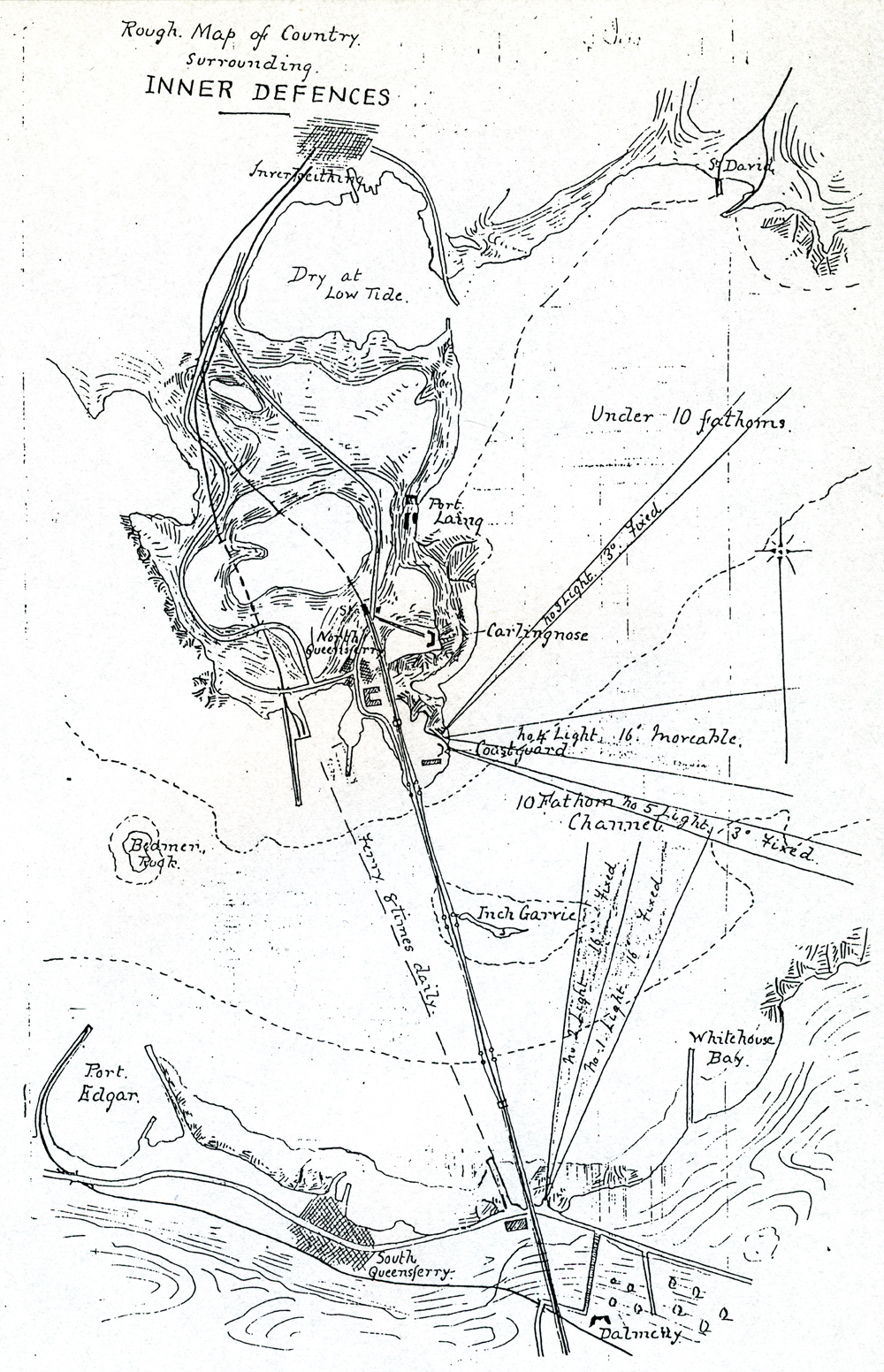 A plan from c 1918 of the Inner Defences showing the various batteries and Defence Electric Lights
A plan from c 1918 of the Inner Defences showing the various batteries and Defence Electric Lights
Fixed Lights No 1 and No 2 were at Dalmeny while Fixed Lights No 3 and No 5 and Moveable Light No 4 were at the Coastguard Battery.
 Extract from the battery plan showing the positions of the lights, and the engine room behind the gun battery.
Extract from the battery plan showing the positions of the lights, and the engine room behind the gun battery.
The 1918 plan of the Coastguard Battery shows Light No 3, 4 & 5 as being obsolete, with a new light emplacement under construction.

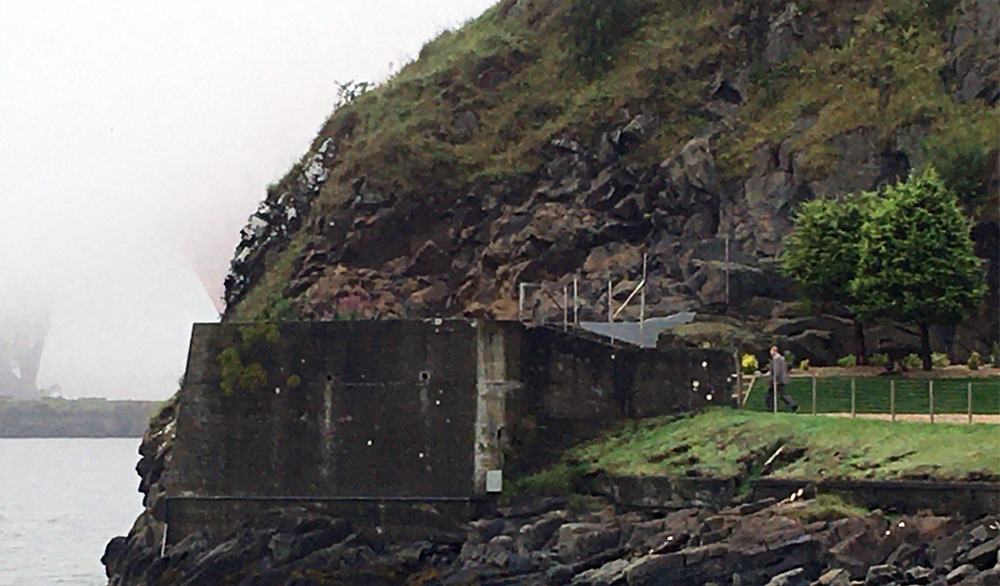 The site today
The site today
| < Ammunition | Δ Index | The End > |
